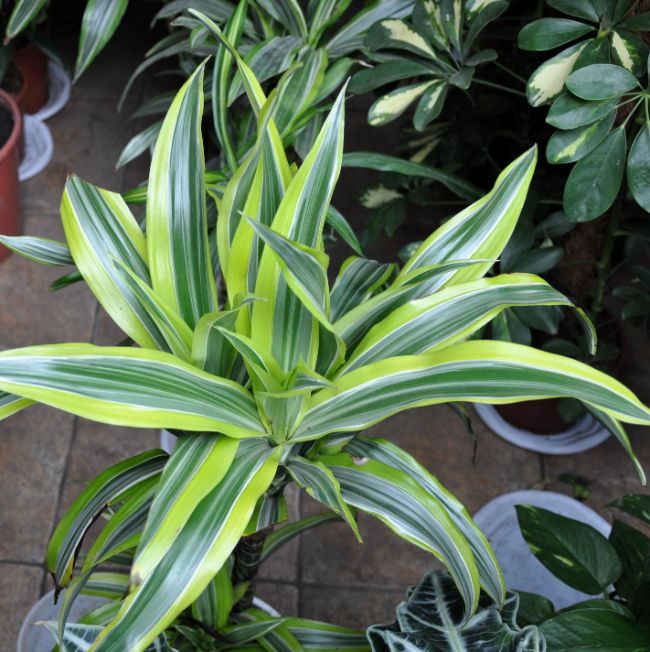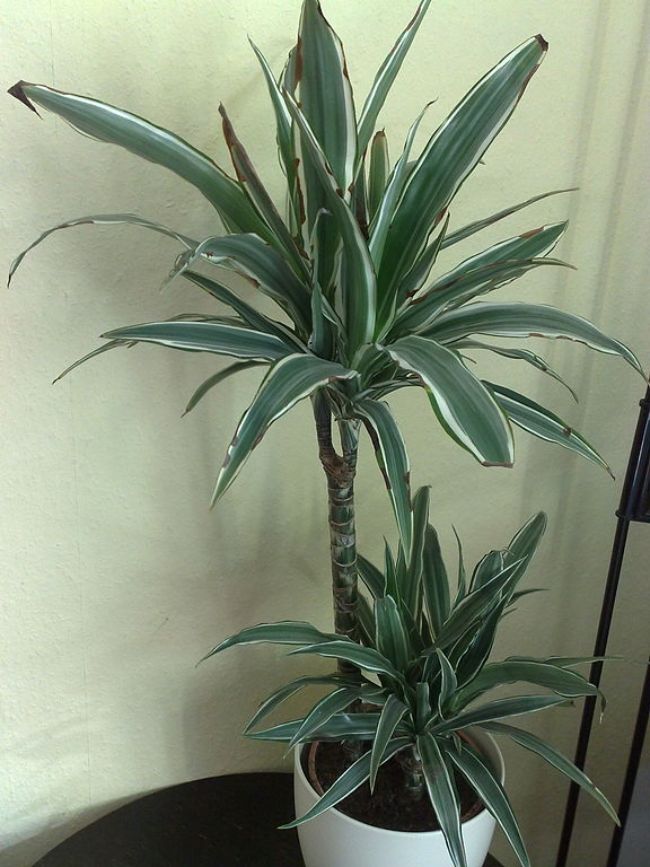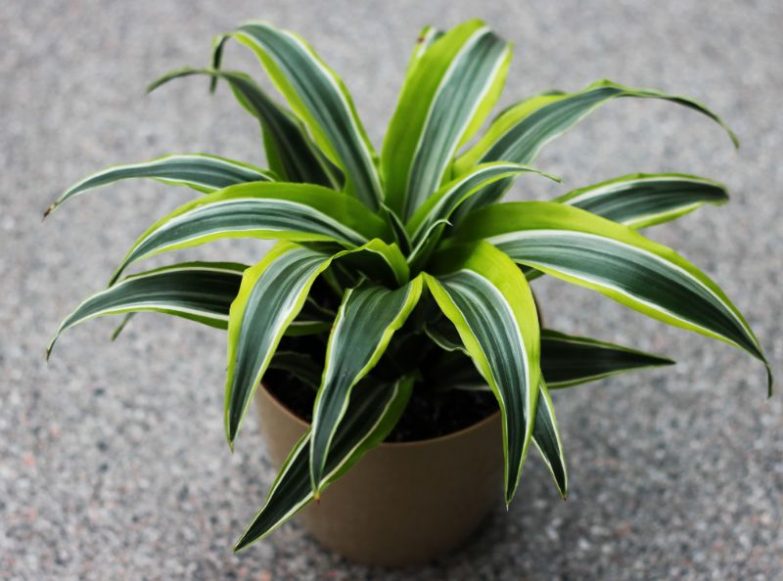Dracaena fragrans, more commonly known as the Corn Plant is a hugely popular houseplant due to its attractive appearance and easy care requirements. Although more resilient than many houseplants, if your Corn Plant has brown tips, you are not alone. There are a number of reasons why this can happen, and it does take a little detective work to identify and fix the problem.
Why Does My Corn Plant Have Brown Tips? Corn plants most commonly get brown leaf tips due to underwatering or inconsistent watering. Other common causes include water high in fluoride or chlorine, or sources of plant stress such as low humidity, excess fertilizer, excess heat and light, pests, diseases and stress due to acclimation or repotting.
This article will show you how to identify why your Corn Plant has brown tips and explain how to correct the problem and get your plant back to health.
Underwatering
Corn Plants (Dracaena fragrans) are one of the more drought-tolerant houseplants, but lack of water will eventually cause problems for your plant, and brown leaf tips are one of the things to expect. Brown leaf tips due to underwatering will be accompanied by dry soil, and you may see leaf curling and brown, crispy lower leaves.
Brown tips on Corn plants happen due to insufficient water reaching the leaf tips to keep them healthy. When water is scarce, it is easier for your Corn Plant to supply water to the parts of the plant that are closest to the roots. The leaf tips, being the furthest point from the source of water are the most likely to turn brown and die in drought conditions.
You should try to water your Corn Plant once the top one to two inches of soil is dry, providing enough water to soak the soil each time you water. Make sure to let all excess water drain from the drainage holes, as you don’t want to let the plant sit in soggy soil. This can cause even worse problems, such as root rot. Read my article about how to water houseplants to learn how to provide just the right amount of water for your Corn Plant.
Inconsistent Watering
A consistently underwatered plant will adapt to some degree to the scarce water available. The plant will grow less foliage and the leaves will typically be smaller.
An inconsistently watered plant will not be able to adapt to the fluctuating conditions. In times of plenty, the plant will start a growth spurt producing plenty of healthy foliage, but when left without water for a long time, the foliage will struggle to stay healthy, and the leaves will develop brown tips, and may become crispy and curled.
Consistency of watering is an important factor in keeping the foliage of your Corn Plant looking healthy and avoiding any brown tips. Make sure to check the soil of your plant every few days so you get an idea of when it will need watered.
Bear in mind that water requirements will change during the year. More water will be required in spring and summer, as the plant grows strongly and evaporation increases in warmer temperatures.
The plant will grow much more slowly or not at all in winter, using much less water. Always be guided by the condition of the plant and soil when watering, and avoid watering on a schedule to ensure your Corn Plant doesn’t get brown tips.

Water Impurities
Whilst Corn Plants are resilient houseplants, tolerating a range of conditions, their foliage will not stay looking perfect unless it is treated right. Corn Plants can be a little sensitive to certain chemicals in tap water such as fluoride and chlorine. These can build up in the leaves, causing toxicity, leading to your Corn Plant getting brown tips, or other leaf problems.
Fluoride levels in tap water can fluctuate significantly, and some local authorities even add fluoride to tap water due to the beneficial impact on dental health.
You may wish to check your local water quality report, which can normally be obtained from your water supplier. If you have high levels of fluoride or chlorine, you could consider using filtered water, rainwater or distilled water to water your Corn Plant. Read my article about choosing what type of water to use on your houseplants to learn more.
Water quality can be a tricky problem to identify, and may not be the first thing you think may be causing your Corn Plant brown tips. I would recommend ensuring that you are meeting the basic care needs of your Corn Plant first before changing the type of water you use.
If you think you are doing a good job with the care requirements, switch to a different type of water, and observe. New leaves should be free of brown tips, although the old foliage will not return to a pristine state.
Low Humidity
Corn Plants naturally grow in humid environments, but they are quite capable of remaining healthy in moderate indoor humidity. It is only when humidity levels drop below 40% that humidity can be a factor in the development of brown tips on your Corn Plant.
I would recommend gettting a digital hygrometer to monitor the humidity levels in your home. If humidity is below 40%, try growing your houseplants together or using a humidity tray to boost humidity levels.
I’ve written an article about the best ways to increase humidity for your houseplants, which goes into more detail.
Excessive Fertilizer
Excessive fertilizer can be toxic to your houseplants, and if your Corn Plant has brown tips, this is definitely a cause you should investigate. Although many indoor potting mixes are relatively nutrient deficient, it is always better to take it easy with fertilizer application.
If you have been applying fertilizer more than once per month, or if you see white salt crusts on the soil surface, overfertilizing may be the reason your Corn Plant has brown tips.
Fertilizers are useful for preventing nutrient deficiency in your Corn Plant, and will help your plant grow to its full potential. However, providing more nutrients than the plant can use will not make the plant grow faster. Once your Corn Plant has sufficient nutrients, other factors such as light, water and genetics will dictate how fast and how large your plant will grow.
Fertilizing monthly during the growing season with an immediate release fertilizer is a good option for indoor Corn Plants. I prefer to use a balanced, water-soluble fertilizer. If you use a houseplant specific formulation, follow the instructions on the label. If using a general plant fertilizer, dilute to half the recommended strength each time you fertilize your Corn Plant to reduce the risk of toxicity.
If you have been applying too much fertilizer, you should thoroughly flush the soil with water. Take your plant to the sink and let water run freely through the soil and out the drainage holes. Letting the water flow for about 5 minutes will help to dissolve excess fertilizer salts and wash them out of the soil.
Once you have done this, avoid fertilizing your plant for at least 3 months, and then resume at a more cautious rate. I would also recommend flushing the soil twice per year as above as part of your general care. Read my guide to fertilizing houseplants to learn everything you need to know.
Excessive Light
Corn Plants grown indoors do best in bright indirect sunlight, although they are quite tolerant to lower lighting. If your plant is in a location where it receives more than 1-2 hours of direct sunlight per day, particularly during the warmer months of the year, then your Corn Plant may have brown tips due to excess light.
You may also see scorch marks elsewhere on your plant, and you may notice that you need to water your plant very frequently due to the plant’s increased water use and increased evaporation.
You should move your Corn Plant to a location where it gets less direct sunlight. Putting a shear curtain across the window works well, or moving it away from the window or to a different room are also good options.

Temperature Stress
Your Corn Plant will thrive in normal indoor temperatures but will start to show signs of stress if exposed to temperatures below 50F (10C) or above 90F (32C).
Some people like to take their Corn Plants outside for the summer, and although this is a good idea, it can be a source of temperature stress. This can either happen if conditions are too warm, or if you leave your Corn Plant outside as the cold nights of autumn approach.
Hot or cold drafts can also be a source of temperature stress, so look for any hot or cold vents or nearby radiators, that could be a source of unhealthy drafts.
If you suspect your Corn Plant has brown tips due to temperature stress, it may be worth setting a digital thermometer beside your plant. This will help record the local temperature that your plant is experiencing. These usually record the maximum and minimum temperatures so it will help you to move your plant to somewhere is happy.
Pests
Sap sucking pests can result in your Corn Plant getting brown tips on the leaves. Sap suckers, such as mealybugs, scale, thrips, aphids, and spider mites love to suck the sap from the leaves and stem of your Corn Plant. This can result in less water and nutrients reaching the leaf tips, resulting in your Corn Plant developing brown leaf tips.
You should regularly check your corn Plant for signs of pests, taking care to look at both the top and undersides of the leaves. Bear in mind that spider mites can be very small, but are normally detected by the presence of fine webbing between the foliage.
If you think you may have spotted a pest, read this article to identify the culprit and for more information on how to get rid of it.
Repotting
Repotting your Corn Plant causes a degree of stress to the plant, and it will require a period of adjustment to the new conditions. Even with careful repotting, there can sometimes be root damage that can impact their function. Water absorption can be impaired and the ability of the plant to support its foliage may not be as good as before it was repotted.
If your Corn Plant gets some brown tips in the few weeks after repotting, just focus on providing good care, and the plant should stabilize and start producing additional healthy leaves.
Acclimation
Whenever you bring your new Corn Plant home, it will have been used to growing in the plant nursery, and will have to adjust to your home. It is normal for the conditions in your home to be less optimal than the nursery, so the plant may initially show some signs of stress.
These can include brown leaf tips or brown spots, or entirely brown lower leaves. As long as the plant stops getting more brown tips after a few weeks, this is normal. Continue normal care and your plant should thrive for many years to come.
Will The Brown Tips On My Corn Plant Go Away?
Unfortunately, if your Corn Plant has brown tips, they will not go away with time. These leaves will keep their brown tips for the life of the leaf. As long as you correct the problem, then new leaves should be entirely healthy, and in time, you will notice the brown tips less, or you can prune off the affected tips or leaves.
Can I Cut The Brown Tips Off My Corn Plant (Dracaena Fragrans)?
Yes, if your corn Plant has brown tips, you can safely remove these. The best way to do this is to cut off most of the brown tip, but leave a thin margin of brown, without cutting into the healthy tissue. If you do cut into healthy tissue, it is likely that the brown tip will recur in time.
Make sure to use sterile pruning tools or scissors, to avoid the risk of your Corn Plant developing disease.

